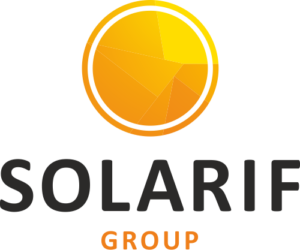Why use Solarif-certified panels instead
of Non-certified panels?
Introduction
Globally, growth in the photovoltaic (PV) sector has experienced a significant increase in the past decade. This growth reflects the wide acceptance of photovoltaics as a clean and sustainable source of energy and continues to grow at a fast pace, consequently increasing the popularity world-wide.
This popularity has seen increased competition in the photovoltaic industry along with many new market entries. These factors led to decreasing module prices and most importantly to compromises regarding the quality of photovoltaic (PV) modules.
These quality characteristics ensure an enormous challenge for PV project investors to tackle and contain quality issues amongst photovoltaic (PV) manufacturers. They are very costly and involve on-site know-how as well as presence.
Solarif certified panels offer the certainty and clarity for all the parties involved
In order to identify, minimize and/or even eliminate the risks of the materials used within photovoltaic installations and consequently invest in solar to generate expected financial returns, Solarif Risk Management developed a unique solution in the form of a panel certification program. This in-house developed solution helps substantially reducing the risks of operational discontinuity of solar (PV) installations through quality inspections on Factory and/or Batch level. This quality label, being Solarif-certified, applies as a condition for the inherent defect cover to be offered against a low fixed premium rate.
The Inherent defect coverage insures damagescaused by the nature of or a defect in the panel itself. In other words, it is weakness which has not been caused by an external event. Examples of Inherent defect are delamination of the panels, bad soldering and short circuitof the junction box. The Inherent defect coverage is an optional cover in addition to the Operational all risk insurance and supports and backs up the manufacturer’s warranty on system level in case of a damage as result of aninherent defect.
Through the additional Inherent defect coverage, PV-assets are much better protected than with an ordinary OAR-insurance and there turns are secured in the best possible way. The cash flows are considerably more stabilized and predictable, which is greatly appreciated by many investors and/orlenders. It is an annual insurance like the OAR and can protect the panelsup to max. 20 years and remains in place even if the manufacturer has gonebankrupt (insolvency cover).
The benefits of purchasing Solarif-certified panels compared to Non-Solarif-certified panels will have positive effects on your return on investment as Solarif-certification indicates that your product has been produced according to Solarif’s quality standards, leading to less failures and improved consistent future returns. Solarif certification mitigates the risk of mounting non-conforming or defective panels on your installation or even worse; the discontinuity of your PV system. Furthermore, certification provides an option for external coverage of factory warranties if required for tenders or supplier selections.
Solarif-certified versus Non-certified
Option 1
Inherent defect coverage with no quality checks (NOT Solarif-certified)
This option will not include any upfront quality and/or financial checks. The annual policy can be renewed up to 20 years and the inherent defect coverage has a limit of EUR 2,500,000.00 per event for material damage and loss of income combined. The annual premium rate varies between 0.25% and 0.285% per year.
Example
Let’s assume a 10MW installation with an insured sum Material Damage and Business Interruption of EUR 7,500,000.00 located in Europe.
The combined premium rate for the Operational All Risk as well as the Inherent Defect coverage will be 0.285% per annum.
The premium for a 10MW installation will cost EUR 21,375.00 annually (EUR 7.5 mil. x 0.285%) excluding insurance tax (country specific).
Note
In a worst-case scenario of a total loss due to an inherent defect only EUR 2,500,000.00 will be compensated for material damage and loss of income combined. This would be an option but not preferable.
Advantages
• You save the costs of the quality inspection on batch level.
• Decrease of the risk of unexpected costs and production loss due to defective panels, even in the event of bankruptcy of the manufacturer.
Disadvantages
• Client does not know the state of quality of the purchased panels.
• The premium rates are much higher as the quality of panels is not checked.
• The inherent defect coverage has a cap of EUR 2,500,000.00 per event for material damage and loss of income combined.
Option 2
Inherent defect coverage with Solarif-certified panels (Inline Quality Inspection)
The second option comprises an inline quality inspection in the factory of the panels purchased during production. The optional inherent defect coverage can be purchased on top of the Operational All Risk insurance against a fixed premium rate of 0,04% per year. The inherent defect coverage has a limit of EUR 20,000,000.00 per event for material damage and loss of income combined and can be purchased on an annual basis up to 20 years.
The inline quality inspection on batch level involves quality control supervision amongst other;
• The material used (BOM vs CDF);
• Visual inspection;
• I-V / Data measurement and;
• 100 % Electroluminescence imaging check.
The inline quality inspection, together with a 100% EL check safeguards the quality of the panels purchased. Non-conforming panels will be replaced on-site.
Example
Let’s assume a 10MW installation with an insured sum Material Damage and Business Interruption of EUR 7,500,000.00 located in Europe.
The owner of the installation pays the inline quality inspection of the panels purchased during production at the factory, which is EUR 25,000.00.
The premium rate for the Operational All Risk coverage (OAR) is 0.12% per year.
Due to the inline quality inspection, Solarif Insurance can provide the inherent defect coverage (ID) against a fixed premium rate of 0.04% per annum.
Therefore, the combined premium rate for the OAR + ID coverage for this park will be 0,16% per annum and cost EUR 12,000.00 per year (EUR 7.5 mil. x 0.16%) excluding insurance tax (country specific) as well as administration costs (EUR 25).
Note
The panels assessed during the inline quality inspection will be Solarif-certified.
The difference in OAR + ID premium between Solarif-certified and Non-Solarif-certified panels is Euro 9,375.00, which means the costs of the inspection is earned back in less than 3 years. Hereafter, you have for at least 17 years a much lower annual premium with combined savings of Euro 162,500.00.
Advantages
• Quality assurance regarding the panels purchased;
• A low fixed premium rate of 0.04% for inherent defect coverage as result of Solarif’s inline quality inspection;
• Your inherent defect coverage knows a limit of EUR 20,000,000.00 per event;
• Costs of inspection is part of CAPEX, where insurance premium is part of OPEX;
• Decrease of the risk of unexpected costs and production loss due to defective panels, even in the event of bankruptcy of the manufacturer.
• Increase in bankability of the project because of the insurances in place.
Disadvantages
Upfront payment of fee for inline quality inspection.
Option 3
Inherent defect coverage with Solarif-certified panels (Factory Risk Assessment)
A panel manufacturer can decide to have certain types of panels produced in a certain factory to become Solarif-certified. Solarif Risk Management performs a Factory Risk Assessment of a certain production line/workshop during a certain period. The Factory Risk Assessment consists of a technical/quality risk assessment as well as a financial risk assessment and costs EUR 22.000,00 per year. If the outcome of the Factory Risk Assessment meets Solarif’s requirements, the assessed type of panels produced during the certification period (1 year) in the assessed factory becomes Solarif-certified.
Clients who have bought Solarif-certified panels (panels produced during the certification period) can purchase the Inherent defect coverage in addition to our Operational All Risk (OAR) insurance against a low fixed premium rate of 0,04% per year.
Note
This option would be recommendable by Solarif advisors and will be worthwhile for Investors of multiple PV projects using the same panels for different projects during a specific period. This option would be very cost-effective as an alternative to paying for inline quality inspections on batch level for each project.
Advantages
• Quality assurance regarding the panels purchased;
• A low fixed premium rate of 0.04% for inherent defect coverage as result of Solarif’s Factory Risk Assessment;
• Your inherent defect coverage knows a limit of EUR 20,000,000.00 per event;
• Costs of inspection is part of CAPEX, where insurance premium is part of OPEX;
• Far more cost-effective compared to inline quality certification in case of a pipeline of PV projects in which the same type of panel will be used;
• Decrease of the risk of unexpected costs and production loss due to defective panels, even in the event of bankruptcy of the manufacturer.
• Increase in bankability of the project because of the insurances in place.
Disadvantages
• Upfront payment of fee for Factory Risk Assessment;
• A part of the Factory Risk Assessment is the financial assessment of the manufacturer. If the financials of the manufacturer don’t meet our requirements certification will be denied.
Evaluation
Comparing Option 1 with Option 2 clearly highlights the difference in premium rates and the huge difference in limit of liability for material damage and business interruption due to inherent defect. In other words, if not Solarif-certified, you pay a much higher premium per year and your coverage per event will be capped at EUR 2.5 million, even if your losses exceed this amount.
Whereby, the costs for inspection of the second option (Solarif-certified at batch level) differ to Option 1, the premium rates will be much lower due to the inline quality inspection of the panels, saving a combined cost of EUR 162.500,00 after 20 years. In addition, the inherent defect coverage per event will be EUR 20.000.000,00 instead of EUR 2.500.000,00.
Option 3 has a fixed price for the Factory Risk Assessment of EUR 22.000,00. Once a factory is Solarif-certified, all panels produced in the assessed factory during the certification period of 1 year qualify for the Inherent defect coverage in addition to the OAR against an additional fixed premium rate of 0.04% per year. The OAR + ID premium of option 1 compared to option 3 is much higher and your coverage per event will be capped at EUR 2.5 million for material damage and business interruption. Option 3 works perfect for multiple projects.
Depending on the requirements of the investor it would be worthwhile to perform an inline-quality inspection on batch level or a Factory Risk Assessment not only to save premium during the full insurance period of 20 years, but also to mitigate the risks of discontinuity and to guarantee only quality panels are being installed into your PV system, therefore protecting the PV asset and securing your ROA in the best possible way. Consequently making investment in a PV project considerably more attractive.

